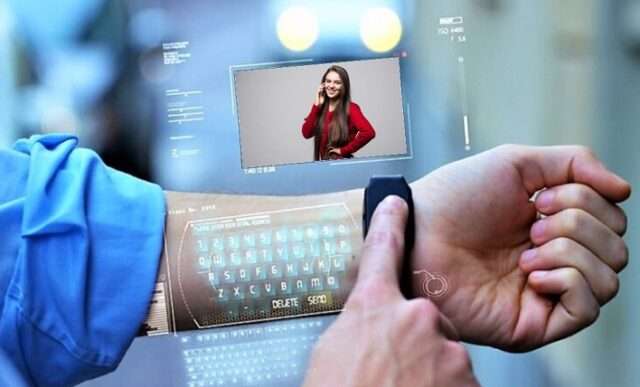10 Innovations that changed Healthcare in the 2023 as the recent advancements in the field of healthcare are mind blowing.
Current trends in technology, innovations and ongoing developments in healthcare have been amazing for the last a few years.
Potential innovations such as Artificial Intelligence (AI), Machine Learning (ML), 3D printing, AR/VR technology and many other exciting innovations are re-aligning the field of healthcare.
Following are a few amazing and wonderful innovations that have revolutionized the healthcare in 2023:
1. Artificial Intelligence
Artificial Intelligence techniques and methods such as Image Processing, Computer Vision (CV), Natural Language processing (NLP), Clinical Decision Support Systems (CDSS), and machine learning
Ai techniques are being used to re-align healthcare by analyzing large medical datasets and provide interesting and valuable insights to improve patient outcomes and reduce healthcare costs.
Read Also
8+8+8 Rule to spend Good Healthy Life
AI is being heavily used for image analysis of MRI scans, CT scans, X-Rays, etc. to identify abnormalities or signs of disease..
Additionally, pathology analysis is helping better and improved diagnosis of the diseases. Moreover, AI algorithms can analyze large amounts of patient data to identify patterns and risk factors for a particular disease.
For the last a few years, AI-powered diagnostic tools have enabled the physicians and doctors to do faster and more accurate diagnoses.
2. Internet of Medical Things
The Internet of Medical Things (IoMT) refers to the integration of medical devices and sensors with internet-connected devices and systems, such as smartphones, computers, and cloud-based services.
IoMT devices can collect, analyze, and transmit medical data in real-time, allowing healthcare providers to remotely monitor patients and make more informed treatment decisions.
IoMT devices can include a wide range of medical devices, such as wearable sensors, smart infusion pumps, and implantable medical devices. These devices can collect data on patient health and wellness, including vital signs, medication adherence, and physical activity.
3. Precision Medicine
Precision Medicine is field of medicine that ensures treatment and medication according to the profile of an individual patient that may include patient’s history, genetic details, lifestyle, etc.
Read Also
Innovations like smart watches, smart rings, and smart bands has made it easy to 24/7 monitoring and record-keeping of a patient and to ensure better healthcare.
Advances in technology such as genomic sequencing have made precision medicine more accessible and may lead to more targeted and effective medical treatments.
4. Genetic Engineering
The recent advancements in the field of genetic engineering has made it possible to edit genes to cure genetic diseases by modifying or replacing faulty genes.
The process of altering the genetic codes of an organism is called gene editing. It can be used to cure genetic disorders that cause diseases.
A process of inducing a new genetic material into a person’s cells to treat or prevent disease is called gene therapy. This process helps in curing the inherited genetic disorders that cause cancer, and viral infections.
5. Robotic Surgery
Robotic surgery is a revolution in the field of medical science. Robotic arms are used to assist surgeons to operate with greater precision and control, potentially leading to faster recovery times and fewer complications.
Technologies like 5G internet, robotic arms, video conferencing, etc. have made it easy for the surgeons to do surgery from remote locations.
10 Innovations that Changed Healthcare in the 2023 and robotics assisted treatment and medication is one of them.
6. Wearable Health Technology
In the last a few years, the wearable devices have become very common and easy for doctors to continuously monitor the patients even from remote locations.
The patients can themselves view and monitor their health status with the help of these wearable devices, especially the diabetic patients and the heart patients.
Wearable health devices, such as smartwatches, smart rings, and fitness trackers do provide remote monitoring of patient health data. Such real-time data of patient is also useful in earlier detection of possible health issues and more personalized medical treatments.
7. Targeted Drug Delivery
Targeted drug delivery is a process of injecting medicine in a patient’s body organ or a body tissue by increasing the concentration of a particular drug.
Nanotechnology is used for this type of targeted delivery of drug in a patient’s body.
8. Telemedicine
Telemedicine is a field of technology that enables patients to remotely connect with its doctors and receive medical treatments and medication details.
The common medium of communication are email, video conferencing, or online consultations. This can be particularly useful for patients who live in remote areas, have mobility issues, or require ongoing medical care.
Virtual and physical telemedicine are helping the doctors and physicians in providing healthcare facilities to the patients in remote and rural areas.
Physical telemedicine includes store-and-forward method and video conferencing method. Whereas, virtual telemedicine uses bots to guide patients about medication and treatment procedures.
9. VR and AR Technologies
VR/AR technologies are proving to be quite helpful and assistive in managing a patient’s pain and anxiety, improving rehabilitation process, and providing trainings to the medical professionals.
Concepts like pain management, rehabilitation, medical trainings, and patient education have become simple and easy with the help of AR/VR technologies.
10. 3D Printing
3D printing technology is used to build 3D structures using 3D printers. In the field of medicine, now 3D printers can print body organs, body tissues, and even certain medical devices.
This amazing technology is being used for medical implants and prosthetic procedures such as hip or knee replacement, tissue and organ engineering by creating artificial tissues and organ transplant.
3D printing can also be used to create medical devices, such as splints or braces, and to create models for medical education and training.
10 Innovations that changed Healthcare in the 2023 have really revolutionized and improved the field of healthcare.











